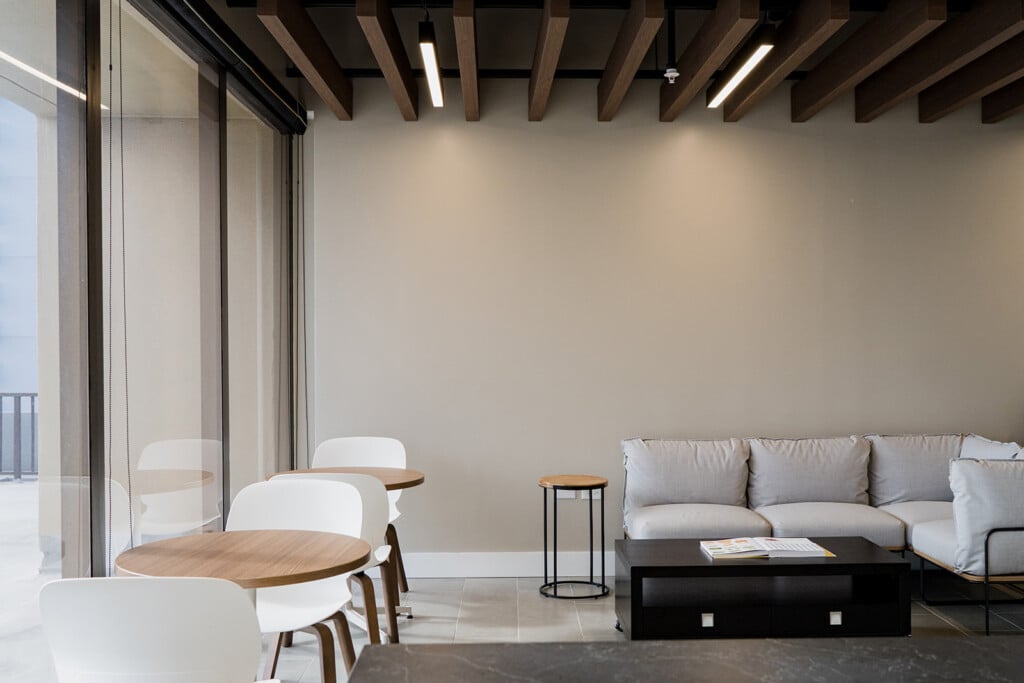Unlocking Innovation: Exploring the Four Essential Collaborative Spaces in the Modern Workplace
The surge in remote work in recent years has emphasized the necessity of dedicated collaborative areas in the workplace. By creating such spaces, organizations demonstrate a commitment to valuing individual experiences and contributions.

The increasing prevalence of remote work, facilitated by technology, has ushered in a significant shift in our work dynamics. This shift underscores the necessity for office spaces to serve distinct purposes, particularly catering to tasks that thrive on in-person collaboration and interaction. For instance, brainstorming and collaborative sessions are often more engaging and fruitful when conducted face-to-face, compared to virtual meetings. Therefore, there is a heightened importance for an increase in collaborative spaces within the floorplate of an office. Collaboration not only sparks innovative ideas but also fosters enduring connections, laying the foundation for an organization’s culture. The surge in remote work in recent years has emphasized the necessity of dedicated collaborative areas in the workplace. By creating such spaces, organizations demonstrate a commitment to valuing individual experiences and contributions. Haworth, a global leader in commercial furniture and workplace research, has defined four essential collaborative zones for integration into your workplace, enabling the following key activities: INFORM, DO, THINK, and CONNECT. Explore further to discover how you can enhance workspaces for each activity, and gain inspiration from Hawaii’s leader in commercial furniture, Systemcenter’s latest furniture projects.
INFORM
A workspace tailored to information sharing will usually include monitors and conference chairs. All seats are faced towards the speaker and attendees are encouraged to listen in and ask questions at specific times or collaborate with each other during training sessions. The monitors and whiteboards are used to convey information and ideas visually which can be easily viewed by everyone. These spaces are great for collaboration within large groups, facilitating knowledge presentations by speakers, and hosting client meetings.
DO
Commonly referred to as “War rooms,” these spaces are specifically designed for tracking and disseminating data, metrics, and project updates. Typically furnished with a table, desk chairs, storage, whiteboards, and a monitor, this collaborative space enables groups or teams to work collectively on tasks. It provides the convenience of keeping important notes pinned on walls or written on whiteboards, facilitating easy reference when team members work individually on assignments that stem from the collaborative efforts.
THINK
People benefit from having dedicated spaces for idea generation, brainstorming, and strategic thinking. These spaces are specifically created with a relaxed atmosphere and cozy seating in consideration, ensuring minimal disruptions and privacy. Sofas and guest chairs are commonly used in these areas. Additionally, they are equipped with monitors and whiteboards to encourage both collective problem-solving and individual expression of creativity on top of facilitating collaboration.
CONNECT
Ancillary spaces are designed to encourage spontaneous interaction and personal connection. Though also great for work, they are built with people in mind. These spaces serve as a cozy lounge area, providing relaxed and warm environments for people to gather. They are equipped with comfortable seating options such as lounge chairs, sofas, and rugs to create an inviting atmosphere. These spaces can be indoors or outdoors and offer great flexibility with movable furniture.
To learn more about upgrading your workspace to boost employee engagement, retention, and recruitment, contact us at info@systemcenter.com for a complimentary space consultation.










